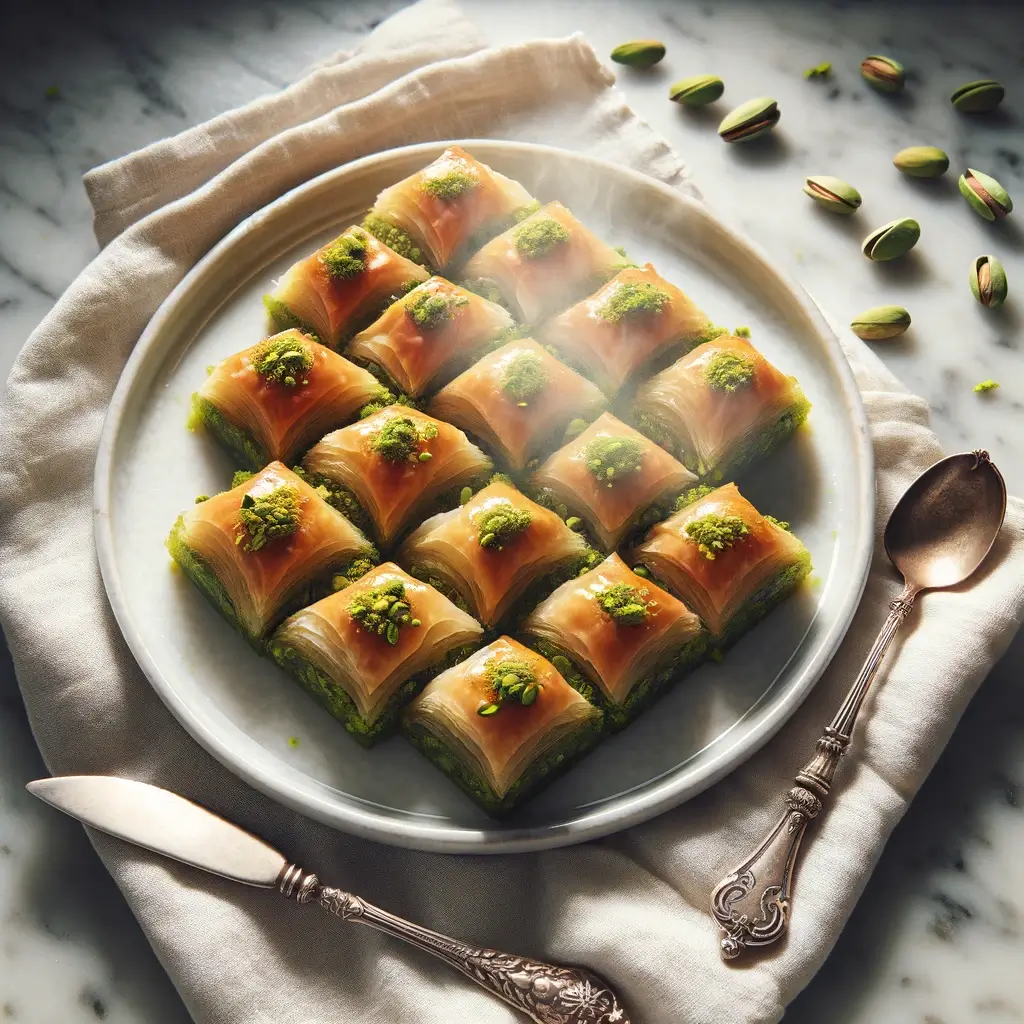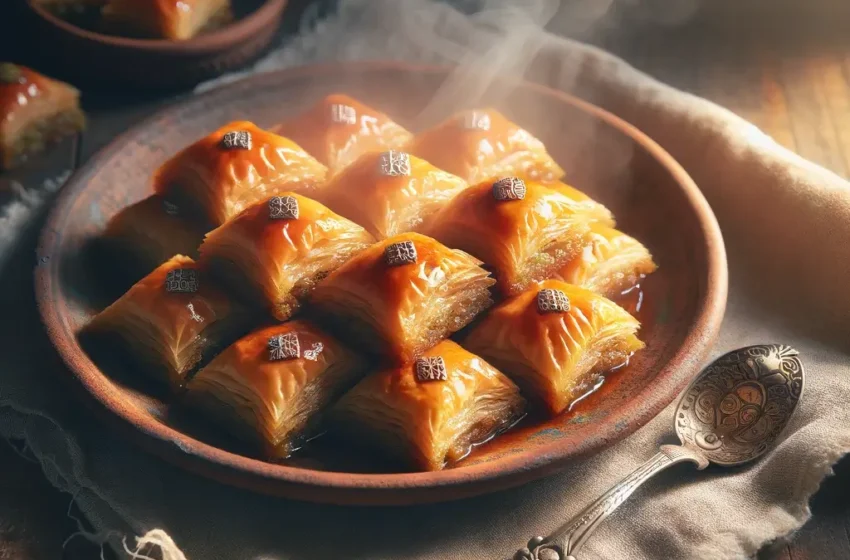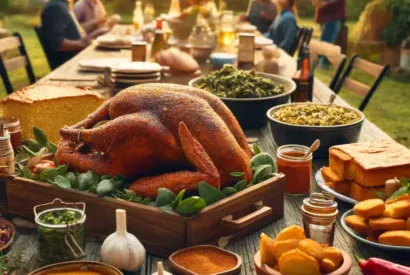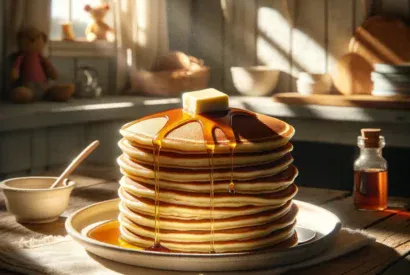Discovering the Secret Ingredient: Nuts in Some Baklava Recipes
As a food reviewer, I’ve had the pleasure of tasting a myriad of dishes from around the globe, but there’s something uniquely satisfying about a well-made baklava. The layers of flaky phyllo pastry, the sweet syrup that binds it all together, and the crunch of nuts nestled within each layer create a symphony of textures and flavors that are hard to resist. Today, I want to share with you not just any baklava recipe, but one that incorporates a specific variety of nuts, elevating the traditional dish into something truly special.

The Star Ingredient: Pistachios
In some of the most memorable versions of baklava I’ve tasted, pistachios have been the standout nut, setting these recipes apart from their more commonly found walnut or almond counterparts. Pistachios offer a slightly sweet, nutty flavor that pairs beautifully with the honey and spices typically used in baklava. Plus, their vibrant green color adds a visual appeal to the dish, making it as much a feast for the eyes as it is for the palate.
Crafting the Perfect Pistachio Baklava
- Preparation Time
30 Mins – 1 hour - Cooking Time
About 1 Hour - Serves
20-25 Adults - Difficulty
Easy
Ingredients
- 1 pound of phyllo dough, thawed ( if you make self How to Make Phyllo Dough)
- 2 cups of finely ground pistachios
- 1 cup of melted unsalted butter
- 1 teaspoon of ground cinnamon
- 1 cup of water
- 1 cup of sugar
- 1/2 cup of honey
- 1 teaspoon of vanilla extract
- A pinch of salt
- Zest of one lemon (optional)
Instructions
- Prepare the Phyllo Dough: Start by preheating your oven to 350°F (175°C). Grease a 9×13 inch baking dish with butter. Carefully lay one sheet of phyllo dough in the bottom of the dish, and brush it with melted butter. Repeat this process, layering and buttering each sheet, until you have about half of the phyllo dough layered.
- Add the Pistachio Mixture: Mix the ground pistachios with cinnamon, and sprinkle an even layer over the phyllo dough in the pan. Cover the pistachio layer with two more buttered sheets of phyllo dough, then add another layer of pistachios. Continue this process until all the pistachios are used, finishing with a top layer of phyllo dough.
- Cut and Bake: Before baking, use a sharp knife to cut the baklava into diamond or square shapes. This makes it easier to serve once it’s cooked. Bake for about 50 minutes, or until the baklava is golden and crisp.
- Prepare the Syrup: While the baklava bakes, combine water, sugar, honey, vanilla extract, and a pinch of salt in a saucepan. Bring to a boil, then reduce the heat and simmer for about 20 minutes. You can add lemon zest for an extra layer of flavor. Let the syrup cool slightly.
- Finish with Syrup: As soon as the baklava comes out of the oven, pour the cooled syrup over the hot pastry. This will ensure the baklava absorbs the syrup, becoming perfectly moist and sweet.
- Let It Set: Allow the baklava to cool completely for several hours, or ideally, overnight. This patience is rewarded with perfectly set layers that are both crunchy and chewy.
The Final Verdict
The result is a pistachio baklava that’s rich in flavor, with a delightful contrast of textures. The pistachios not only add a unique taste but also make this dish visually stunning. Each bite is a testament to the care and precision put into its creation, and it’s a recipe that I find myself returning to time and again.
Whether you’re a seasoned baker or new to the world of Mediterranean desserts, this pistachio baklava recipe is sure to impress. It’s not just a dessert; it’s an experience, one that I am thrilled to have discovered and even more delighted to share. So, roll up your sleeves, and let’s bring a piece of culinary magic into our kitchens.
You Can Also Read:- Dragon’s Beard Recipe
FAQs: Pistachio Baklava
- What is baklava?
- Baklava is a rich, sweet pastry made of layers of phyllo dough filled with chopped nuts and sweetened with syrup or honey.
- Why are pistachios used in some baklava recipes?
- Pistachios are used for their unique, slightly sweet flavor and vibrant green color, which add a special taste and visual appeal to the baklava.
- Can I use other nuts instead of pistachios?
- Yes, walnuts, almonds, or a mix of nuts are also commonly used in baklava recipes.
- Is phyllo dough necessary for baklava?
- Yes, phyllo dough is essential for traditional baklava, as it creates the pastry’s characteristic flaky layers.
- How do I prevent the phyllo dough from drying out?
- Keep the phyllo dough covered with a damp cloth while working with it to prevent it from drying out.
- Can I make baklava without butter?
- While butter is traditional, you can use clarified butter (ghee) or a plant-based alternative for a vegan version.
- How thick should the nut layer be in baklava?
- The nut layer should be evenly spread and not too thick, allowing for multiple layers within the pastry.
- Can I add spices to the baklava?
- Yes, cinnamon, clove, and cardamom are popular spices that can be added to the nut mixture for extra flavor.
- How do I know when baklava is done baking?
- Baklava is done when the top is golden brown and the edges appear crisp and flaky.
- Why is my baklava soggy?
- Sogginess can occur if the syrup is too hot when poured over the baklava or if the baklava doesn’t have enough time to absorb the syrup and cool.
- Can I make the syrup with honey instead of sugar?
- Yes, honey can be used entirely or in combination with sugar to create a richer flavor.
- How long does baklava last?
- Properly stored baklava can last up to 2 weeks at room temperature or longer if refrigerated.
- Can baklava be frozen?
- Yes, baklava freezes well. Wrap it tightly and freeze. Thaw at room temperature before serving.
- How do I cut baklava before baking?
- Use a sharp knife to cut the baklava into diamonds or squares, being careful to cut through all the layers.
- What’s the best way to serve baklava?
- Baklava is best served at room temperature or slightly warmed, often with a cup of coffee or tea.
- Is baklava gluten-free?
- No, traditional baklava is made with phyllo dough, which contains gluten.
- How can I make vegan baklava?
- Use a plant-based butter alternative for brushing the phyllo and opt for a syrup sweetened with sugar or agave instead of honey.
- Why pour cold syrup on hot baklava?
- Pouring cold syrup on hot baklava ensures it absorbs properly, creating a perfectly sweet and moist dessert.
- Can I use orange zest instead of lemon in the syrup?
- Yes, orange zest can be used for a different citrusy flavor profile.
- How many layers of phyllo dough do I need?
- Typically, you’ll need about 40-50 sheets for a traditional recipe, divided between the bottom, middle, and top layers.
- What’s the significance of the diamond shape in baklava?
- The diamond shape is traditional and allows for more pieces to be made, but squares or triangles work too.
- Can I make baklava with only one type of nut?
- Absolutely, using just one type of nut, like pistachios, focuses the flavor and is quite common.
- How do I ensure my baklava has crisp layers?
- Brush each phyllo sheet with melted butter and bake until golden to ensure crisp layers.
- What if my phyllo tears while assembling?
- Don’t worry; just patch it up with another piece of phyllo. The layers and syrup will hide minor tears.
- Can I prepare baklava ahead of time?
- Yes, baklava can be made a day or two in advance, allowing the flavors to meld together.
- How do I store leftover baklava?
- Store in an airtight container at room temperature or refrigerated.
- Why is my syrup not thickening?
- Ensure you simmer the syrup long enough for it to reduce and thicken; if it’s too thin, it won’t absorb properly.
- Can I add chocolate to baklava?
- While not traditional, chocolate can be drizzled over the top for a modern twist.
- How do I make the syrup more flavorful?
- Add spices like cinnamon sticks or whole cloves to the syrup while it simmers.
- Is baklava a dessert or a snack?
- Baklava is versatile and can be enjoyed as a dessert, snack, or with coffee or tea as a treat at any time of day.
Source:- The Mediterranean Dish












